.part 2 Introducing the book
Documents on the Persian Gulf’s name the eternal heritage of ancient time .part 2
Introducing the book and Atlas
Documents on the Persian Gulf’s name the eternal heritage of ancient time” is a book and atlas written and compiled by Dr. M. Ajam. published on 2004. A second edition was published under the supervision of Dr. Pirouz Mojtahedzadeh and Dr.M. Ganji in 2009. The book was chosen as a candidate to receive prize of the best book of the year 2010 in Iran and was announced and ranked by the books authority of Iran among the best books in the last 50 years on the subject of ” Persian Gulf issues” in Persian language.
part of the book also had been included in the book “Persian Gulf by Javad Nourouzi and translated and published into 10 languages : Persian, Arabic, English, French, German, Italian, Spanish, Russian, Chinese and Urdu
also a famous documentary film titled Persian Gulf Name in the Course of History by Orod Atarpour has been produced and broadcasted in IRIB TV and Press TV mainly based on the document of this book. also a summary of the book had been published on the UN website in 2006 under the title
This book was first published online in 2001
Then it was published in 2004 in color
And a newer version of it was released in 2009. The contents of the book have been repeatedly published in the persian media.
According to the sugestion and recommendations of this book, the Persian Gulf National Day was registered by the Iranian government in 2005.
Part of the book was presented to the United Nations as a national report and published on its geographical site
A glance at the Historical, Geographical and Legal Validity of the term : Persian Gulf
:It also can be read in this address
the 2006 UN report prepared by a panel of experts regarding the nomenclature is reproduced here as an Occasional Paper. Editor, MEI OP.]
http://www.mei.org.in
The book has 6 chapters and some document and maps
Summary of Chapter Three of the book “Documents on the Persian Gulf’s name the eternal heritage of ancient time
What's in a name? For the Persian Gulf, quite a lot
What's in a name? For the Persian Gulf, quite a lot
The necessity for the integrity and unity in writing geographical names and prevention of any ambiguity or multiplicity forced the UN to establish a legal foundation. In 1967, the first conference on the standardization of geographical names was held in Geneva with the participation of scientific and administrative commissions. In the same conference (Geneva), all the Arab countries strongly disagreed with the Israel’s suggestion for changing the name “Gulf of Aqaba”, calling it an improper action. Other countries supported the Arab nations’ concept and finally Israel withdrew its request . From a legal perspective, this action by the Arab countries can be used against themselves in a similar case. “Since 1971 when the incomplete phrase “the Gulf” was first used by a UN letter, protest notes were sent to the UN and it issued a correction and announcing the UN official's role.
Naming Background of the Persian Gulf
“The Red Sea was introduced as the Arabian Gulf by Herodotos. In the world map Hecataeus (472 to 509 B.C), the Persian Gulf and Arabian Gulf (Red Sea) have been clearly shown. Also, in the world map of Diseark (285-347 B.C), the Persian Gulf and Arabian gulf are completely distinct”. The ancient Greeks called Pars Sea as “Persian Gulf” and Red Sea as “Arabian Gulf” [4].
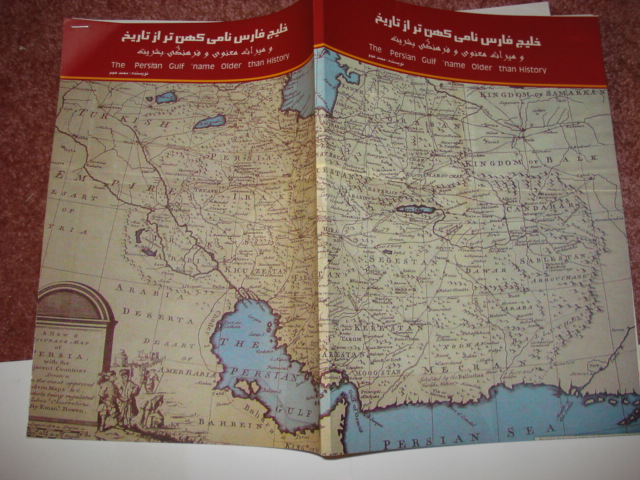
2.2. The Origin of Attempts to Distort the Name of Persian Gulf
According to many relevant studies, the origin of distortion dates back to 1960s, but whether the government of Britain or Arab countries first began the story requires further discussion. A group of researchers believe some Arab countries began to use the forged name with the spread of Pan-Arabism. The Arabism ideology seeks to unite the Arab world by certain principles and policies. Some other assert that Charles Belgrave and Roderick Oven, the British government agents, used the forged name “Arabic Gulf” in their books for the first time, after which it spread to Arab countries, and we do not encounter such name even in the books or writings of the Arabs, except for some historians and geographers calling the Red Sea “Arabian Gulf [5]. In 1958, Abd al-Karim Qasim staged a coup in Iraq and claimed to be the leader of the Arab world, so he needed to propound the theory of foreign enemy in order to attract the Arab nations’ interest and attention. At that time, the Arab world led by the Egyptian colonel Gamal Abdel Nasser was engaged in a conflict with Israel [6]. By changing the names “Persian Gulf” and “Khuzestan”, Abdel Nasser resolved to introduce Iran as a new enemy to the Arab world in order to direct attention from Cairo to Bagdad. He used this political game with history and geography as a pretext for creating a division between the Arab nations and Iran. However, since the coup and violent policies of the colonels of Bagdad failed to interest Arabs, Abd al-Karim Qasim’s propaganda found no place among them too [6]. Not only Kuwait, which used to be under the fear and political pressure of Bagdad, signed its contract of independence with Britain as “Al-khalij Al-Farsi” (Persian Gulf) in 1958, there have also been tens of deeds and maps published in Iraq which used the true name “Persian Gulf” [7
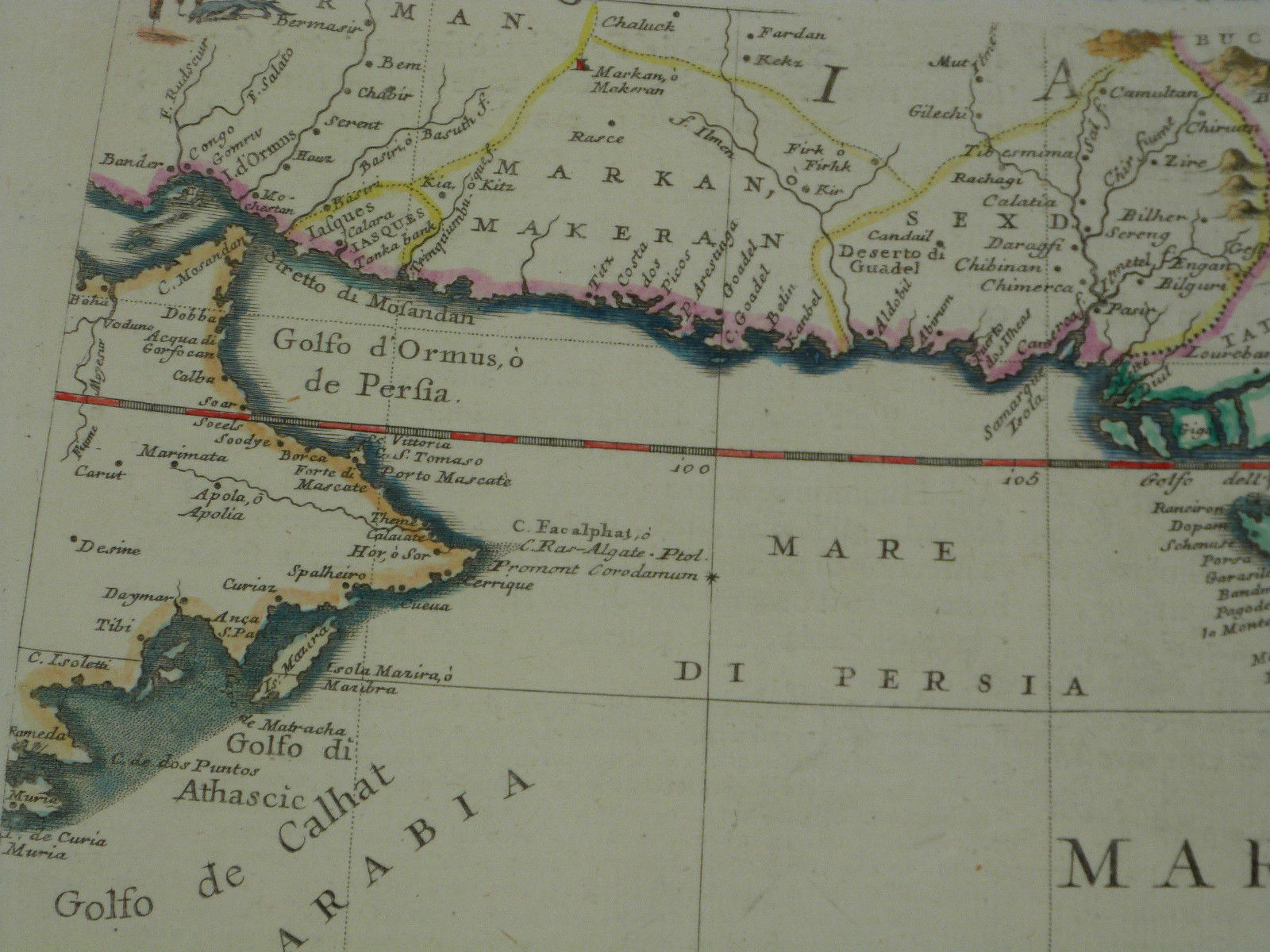
- 3. THE MAJOR REASONS FOR DISTORTING THE NAME “PERSIAN GULF”
The Disputes Between Iranians and Arabs Throughout History
.jpg)
The relations between Iranians and Arabs before and after the advent of Islam clearly explain the background of these disputes. Before the rise of Islam and in the period of Jahiliyya2, the Arabs, deprived of any civilization, were either subordinate to the Persian Empire or Roman Empire. As Islam spread all over the region and Iran and brought bliss and honor to the Arabs, the behavior of Arab states, contrary to the true teachings and principles of Islam, was based on race and ethnicity. However, Iranians soon retrieved their independence and honor. Despite some interactions between Iranians and Arabs at the dawn of Islam, they had conflicts too, for which the racial discrimination policies of Umayyad Caliphs were the main reasons. The Umayyad Regime was founded in AD 661 and lasted for near a century. They revived the ethnic and racial privileges, formerly annulled by the teachings of Islam. The Umayyad Caliphs discriminated against non-Arabs, especially Iranians. Iranians’ strong feeling of affection and devotion towards Ali ibn Abi Talib3 led to such discrimination. Despite the fact that Iranians warmly welcomed Islam, the aforementioned discrimination and unfair practice of Umayyad Caliphs triggered the conflicts [8].
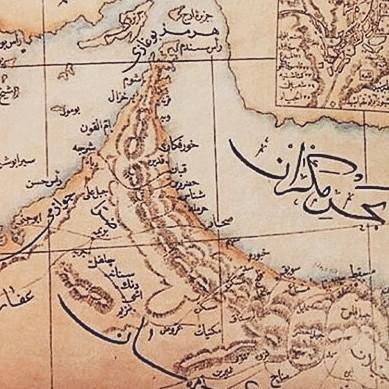
.jpg)
.jpg)
The Arab Extremists; an Escape from Identity Crisis
A part of this refers to the historical disputes between the two sides and the rest is related to the Arabs’ historical identity. The extremist groups consider forging a historical identity as the easiest way to escape from lack of a valuable identity. The Arab extremists’ attempts to distort the name “Persian Gulf” are rooted in an identity crisis. Lack of civilization before Islam is a notable example. As mentioned in the Quran1, in pre-Islamic Arabia, people used to bury alive female newborn infants because a daughter was considered a disgrace to the family. The Third Arab-Israeli War in 1967 which led to Israel’s decisive victory and also the unfavorable image of Arabs presented by Hollywood made them frantically endeavor to revive their lost reputation in the world.
Non-Arab Self-Seeking Institutes
There are generally other groups that foment discord and benefit from it. Obviously, the project of distortion has been funded by petrodollars of Arab countries. A number of Western research institutes seized the opportunity and encouraged the regional Arab countries to advance the project. By providing forged deeds about the Persian Gulf, the aforementioned institutes would take a large amount of money. Two of the noblest sciences, law and history, were manipulated in order to distort the name “Persian Gulf”, hence, historians and legal experts were the most serious objectors to this distortion. In their view, invasion of a nation’s history means a moral transgression and signifies downfall of values [8].
The Arab world’s Concern about Iran
In recent years, Iran’s effort to achieve the nuclear energy has caused some kind of fear in the Arab countries bordering the Persian Gulf which is the result of anti-Iran propaganda spread by the West, especially the US. Despite all peacemaking efforts of Iranian religious officials and politicians, Arab states are still concerned about Iran’s power. Not only will this concern be assuaged, it might deteriorate as well by orations or statements. All negative points contained in the history of Islam or even before Islam such as being Arab or non-Arab, Shiite or Sunni, etc. have been fixed in their mind and constantly provoked by the colonialist powers. This fear of Iran, albeit delusional, has caused an alliance in the Arab nations and consequently the iterative claims over the ownership of the Islands Abu Musa, Greater Tunb, and Lesser Tunb and also distortion of the name Persian Gulf have been a major issue in the Middle East.
- . CONCLUSION & RECOMMENDATIONS
. Initiatives to Stabilize and Uphold the Name of Persian Gulf
In conclusion, there are 4 major reasons behind the distortion of Persian Gulf’s name: (1) Arab-Iranian relations throughout history before and after Islam; (2) the Arabs seeking to repair their international image;(3) the self-seeking institutes funded by Arab extremists; (4) fear of a nuclear Iran. On the whole, any act of distortion is considered a kind of aggression which must be accordingly responded. As the final section, we note some actions which need to be taken in order to stabilize and uphold the name of Persian Gulf, while illuminating the issue to the general opinion in the world.
. Holding Multiple Conferences on the Persian Gulf
Although considerable efforts have been made by Iranian scholars and intellectuals, more national and international conferences and research papers on the Persian Gulf are needed.
Media Campaign
Given that the mass media have a substantial effect on the audience’s mind, it is suggested to launch a satellite channel named “Persian Gulf” broadcasting a wide range of news or documentaries with a focus on cultural and political events.
. Sports and Cultural Activities
Setting up Iran Pro League with the new name “Persian Gulf Pro League” was one of the most proper decisions made by Iran Football League Organisation. Also, in the past years, a few friendly soccer
cups were held with the name Persian Gulf Cup in which the neighboring countries participated. It is noteworthy that some soccer teams from Arab countries (which politically have claims on the name of Persian Gulf) actively took part in the competitions. The authorities are highly suggested to pay more attention to such activities.
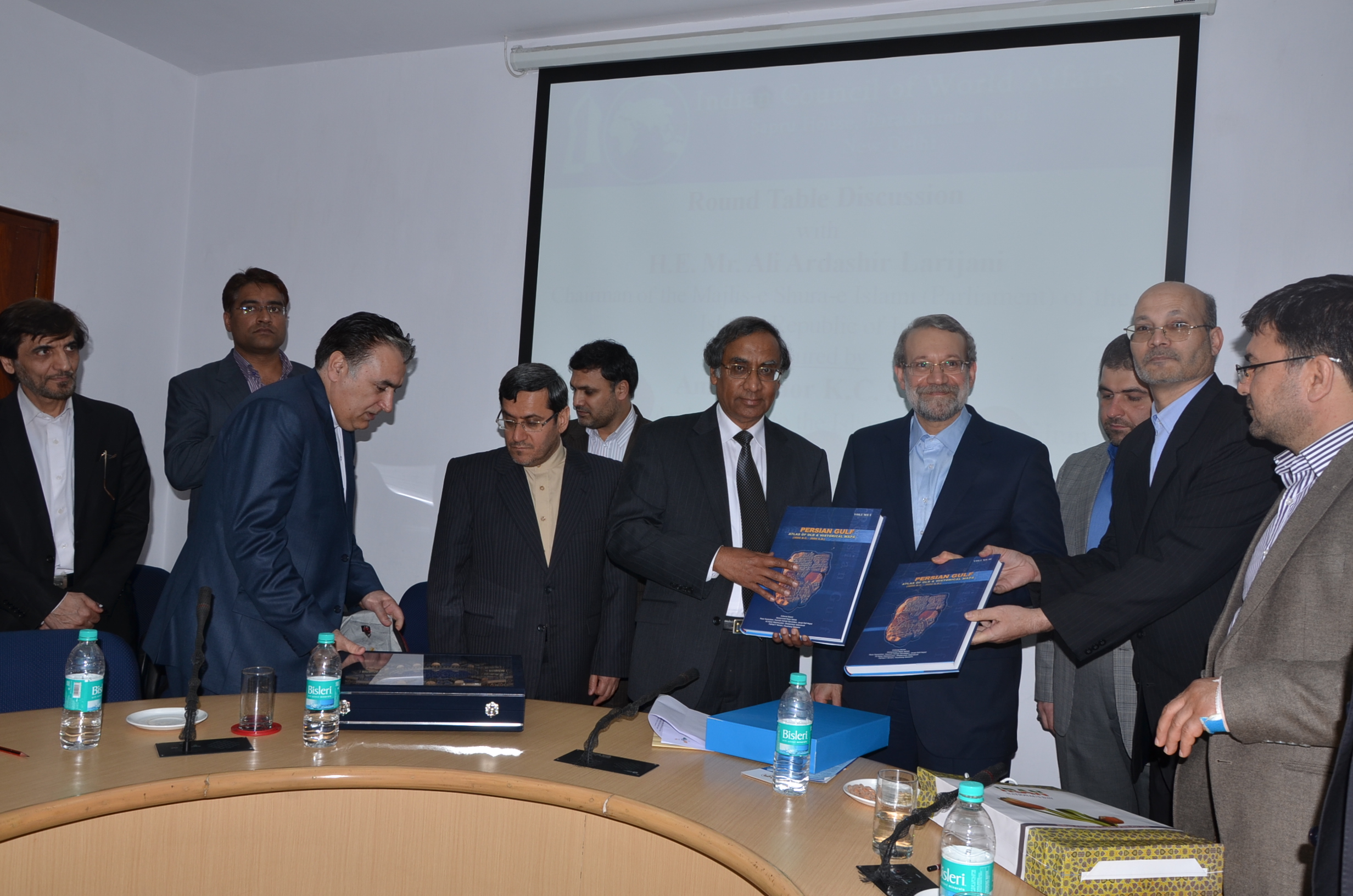
. Taking Advantage of Translation Industry
Although there are well-founded books about the history of Persian Gulf, a small number of them were translated into foreign languages. The authors suggest that the books about the Persian Gulf containing historical information, maps and deeds should be translated into the official languages of the United Nations (Arabic, Chinese, English, French, Russian, and Spanish). In order to do this, Iran’s Supreme Cultural Revolution Council must provide the active support, because one of its goals is to formulate and advance.
*some historical maps with reference to the Persian Gulf
from 6th to 20th century.
01-
Map_of_the_World_6th_century_Original_and_reconstOne of the oldest surviving European maps from Byzantine era with the word 'Sinus Persicus' .C. 6th century CE
02
Reconstruction Avezac of a world map by Anonymous Geographer from Ravenna .C. 700 CE
03
Reconstruction Avezac of a world map by Anonymous Geographer from Ravenna.C. 700 CE
04
Istakhri_map_Bahr_Fars.Regional map showing the word Bahr Fars, (Persian sea) in Arabic, from the text of Al-aqaalim by the Persian geographer Istakhri.C. 9th century
05
Persian_Gulf_11th_century_Arabic_Manuscript.An Islamic map showing Persian Gulf ..C. 320 A.H. (932 CE)
06
Abu Raihan Biruni world map of the distribution of land and sea,C. 1029
07
Persian_Gulfs_Biruni_Map.Haft-Darya (seven Seas).C. 1029
08
Saint_Sever_map_pf_the_world_after_Beatus_1030
Saint Sever map of the world..C. 1030
09
Mappa_di_Eratostene-19th_.C.Reconstruction of 194 BCE Eratosthenes map..C. 19th Century
10
Ptolemy_World_Map_15th_Century.jpg (153015 .)
A map based on Ptolemy's Geography for comparison. The work uses the phrase Persicus Sinus..C. 15th century
11
Ptolemaei_Kartor_early_1400 Dati, La Sphaera of Ptolemaei map.
From the beginning of the .C. 1400
12
Ptolemy_Bologna_map1482.
Map of the World, Bologna edition of Ptolemy Geographia
.C. 1482
13
1482 Ptolemy of the Middle East.Ptolemy of the Middle East
.C. 1482
14
Koeln_map_of_Middle_East_1584 Koeln map of Middle East
.C. 1484
15
Arabia_Persian_Gulf_and_Insia_Ocean_1484* Persian Gulf and Arabia from Claudius Ptolemaeus, Cosmographia, Jacobus Angelus interpres (Bliothèque nationale de France).C. 1484
16
Arabia_and_Levant_1484Arabia and Levandt from Claudius Ptolemaeus, Cosmographia, Jacobus Angelus interpres (Bliothèque nationale de France).C. 1484
17
Quater_of_Asia_1486* Quater of Asia..C. 1486
18
Incunabula_world_map_by_Hartmann_Schedel_1493 German Map of the World by Hartmann Schedel .C. 1493
19
Danckerts Map of Asia 1500Danckerts Map of Asia..C. 1500
20
Ptolemys_world_map_15th_century..Ptolemy's world map (Persicus Sinus).C. 15th century
21
Alberto_Cantino_World_Map_1502World Map by Alberto Cantino
.C. 1502
22
J_Pentiusde_Leucho_map1511World map from Ptolemy, Geographia. Venice: J.Pentius de Leucho .C. 1511
23
QUINTA_ASIE_TABULA_1513 Qunita Unita Asie Tabula..C. 1513
24
Pietro_Coppo_map_of_Asia_1520Pietro Coppo map of Asia. .C. 1520
25
Persian_Gulf_1531.Map denoting Sinus Persicus..C. 1531
26
French map of Persian Gulf.C. 1540
27
Swiss_map_PG_1540_Basel.Swiss map based on Ptolemy's Geographia.C. 1540
28
Persian_Gulf_Italian_Map1548. Giacomo Gastaldi's map denoted by cartographic historian Gerald Tibbetts as the first "modern" map of the area, denoting 'Golpho de Persia'.circa 1548
29
Asia_by_Sebastian_Munster_1545Asia by Sebastian Munster.C. 1545
30
Arabia_Felice_Nuova_Tavola_1574Italian map of Arabia Felice Nuova Tavola.C. 1574
31
Ptolemy_PG_1578.Gerhard Mercator's atlas production from Ptolemy's Geographia, depicting Sinus Arabicus (for Red Sea) and Persicus Sinus (Persian Gulf).C. 1578
32
Ortelius_Map_1580Map by Abraham Ortelius using the term "Persicus" (MAR MESENDIN ol. Sinus Persicus).C. 1580
33
1588_Persian_Gulf_Map.Map by Sebastian Munster.C. 1588
34
Asia_by_Heinrich_Bunting_1590Asia by Heinrich Bunting.C. 1590
35
Jan_Huygen_Van_Linschoten_1596Map of Asia by Jan Huygen Van Linschoten.C. 1596
36
German_map_Matthaus_1598.German map.C. 1598
37
16th_c_PG_ufl.Map of Near East.C. 16th century
38
Iran_Map_Hondius_1610.Map by Dutch map maker Jodocus Hondius.C. 1610
39
Persici_Sive_Sophorum_Regni_Typus_by_Abraham_Ortelius_1612* Abraham Ortelius Map of Persia.C. 1612
40
Near_East_William_Hole_1614English map of the Near East by William Hole.C. 1614
41
Italian_Map_of_Asia_VII_by_P._and_F._Glignani_-_Padua_ca._1621
Italian Map of Asia (Table VII) by P. and F. Glignani, Paduaca.C. 1621
42
Italian_Map_of_Asia_V_by_P._and_F._Glignani_-_Padua_ca_1621* Italian Map of Asia (Table V) by P. and F. Glignani, Padua.C. 1621
43
French_Map_of_Persia_and_independant_terretories_1623Persia & Independent Tartarie.C. 1623
44
John_Speed_Map_of_Asia_1626John Speed Map of Asia.C. 1626
45
Posidonius_map_of_the_world_by_Petrus_Bertius__Melchior_Tavernier_1628Greek map of the world by Petrus Bertius & Melchior Tavernier (Sinus Persicus).C. 1628
46
Ancient Mesopot French map of Ancient Mesopotamia,.C. 1631
47
Populi Persarum Arabes 1675Populi Persarum Arabes.C. 1675
48
Asia_by_Gerhard_Mercator_1695Asia by Gerhard Mercator.C. 1695
49
Egypt__North_Africa_showing_Ewd_sea_as_the_Persian_Sea_1696* German Map of Egypt & North Africa showing 'Red sea' as the 'Arabisch Sinus Pars' .C. 1696
50
Map_of_Persian_Gulf_by_John_Thornton_1699English map of Persian Gulf by John Thornton.C. 1699
51
PersianGulf_Jansson_17th_.C.Jan Jansson's map of the Persian Gulf
.C. 17th century
52
Periplus_Latin_Map_17th_century Periplus Latin Map.C. 17th century
53
Spanish_Map_of_the_Europe_1700Spanish Map of the Europe.C. 1700
54
Italian_Map_of_Africa_1700Italian Map of Africa.C. 1700
55
Italian_Map_of_Asia_the_Persian_Gulf_and_Sea_.C. 1700
Italian Map of Asia the Persian Gulf and the Persian Sea (Oman Sea)
56
Near_East_and_Europe_by_Guillaume_de_Lisle_.C. 1709
French map of the Near East and Europe by Guillaume de L'isle
57
Das Reich der Perser und der PorthenA German Map of the Parthian Empire, Frankfurt.C. 1719
58
Persia_Weigel_Christoph.C. 1719 Persia by Christoph Weigel
59
Parthia_by_Allain_Manesson_Mallet_1719
Parthia by Allain Manesson Mallet.C. 1719
60
Iran_e_Bozorg2_1719World Map.C. 1719
61
Persia_Homann_Johann_Baptist__.C. 1720Persia Homann, Johann Baptist
62
Italian_pap_of_Africa_with_Persian_Gulf_and_sea_by_Paolo_Petrina_of_Napolit_1722 Italian map of Africa with Persian Gulf and teh Persian Sea (Oman Sea) by Paolo Petrina of Napoli .C. 1722
63
Africa_by_John_Senex_1728Africa by John Senex.C. 1728
64
Seutte_Persia_and_Arabia_Geographicus_1730Seutter Persia and Arabia Geographicus.C. 1730
65
Persia_by_Mattheus_Seutter.C. 1730 Persia by Mattheus Seutter
66
Ottoman_Map_by_Heirs_Homann_Nuremberg_.C. 1737
German map of Ottoman Empire by Heirs Homann, Nuremberg
67
Persian_Gulf_French_map1740French map of Persia.C. 1740
68
Seutter_Map_of_Persia_and_Middle_East_1740Seutter Map of Persia and Middle East.C. 1740
69
Persia_By_Ch-Cellarius_1747 Persia By Ch-Cellarius (and the enlarged section) .C. 1747
70
Asia_secundum_legitimas_Projectionis_Stereographicae_1744*
British_Map_of_Asia_1808_Persia__section
Asia secundum legitimas Projectionis Stereographicae - In this map the Persian Gulf & the Persian Sea mentioned for(Arab Sea).C. 1744
71
Persia Emanuel Bowen 1747 Emanuel Bowen map of Iran (Library of Congress, USA).C. 1747
72
Persian_Gulf_map_van_keulen_1753Iran and Persian Gulf by Van Keulen.C. 1753
73
Ottoman_Empire_by_L._Euler_C.1753_Berlin Ottoman Empire by L. Euler, Berlin - The Persian Gulf & the Persian Sea (Oman Sea)
74
French_Map_of_Arabia_1772French Map of Arabia.C. 1772
75
Near_East_Thomas_Jefferys_1754Near East Thomas Jefferys.C. 1754
76
Indian_Ocean_by_Nicolaus_Bellin_1758German map of Indian Ocean by Nicolaus Bellin.C. 1758
77
Middle-East_Vaugondy_1767Middle-East Vaugondy.C. 1767
78
English_map_of_Persia_by_John_Gibson_1770English map of Persia by John Gibson.C. 1770
79
Carte_De_LArabia__Paris_1771Carte De L'Arabia, Paris
.C. 1771
80
Marine_Map_of_Asia_Paris_1780Marine Map of Asia, Paris .C. 1780
81
Persia_and_Garden_Eden_by_Thomas_Bowen_1780 English map of Persia and the Garden Eden by Thomas Bowen .C. 1780
82
Persian_and_Northern_Asia_by_M_Bonne_1780Persian and Northern Asia by M Bonne.C. 1780
83
French_map_of_Kingdom_of_Persia_by_M._Bonne_1780French map of Kingdom of Persia by M. Bonne.C. 1780
84
Italian_map_of_the_Empire_of_Persia_by_Antonio_Zatta_1784Italian map of the Empire of Persia by Antonio Zatta.C. 1784
85
Tuquie_dAsie_et_Perse_Turkey__Persia_1795French map of Turkey & Persia,.C. 1795
86
Map_of_Persia_and_the_Persian_Gulf_1797Map of Persia and the Persian Gulf.C. 1797
87
German_map_of_Persia_by_.C.G_Reichard_1804German map of Persia by .C.G. Reichard.C. 1804
88
Asia_Mollo_Tranquillo__1807Asia Mollo, Tranquillo.C. 1807
89
British_Map_of_Asia_1808.British Map of Asia_1808_Persia _sectionA British map and the enlarged section.C. 1808
90
Persia_including_PersianGulf_1811Persia (including the Persian Gulf's Arab states).C. 1811
91
IranPersianGulf_1820Map by Universal Dictionary of Arts, Sciences, and Literature by Abraham Rees.C. 1820
92
Drury map of Persia 1822Drury Map of Persia.C. 1822
93
Ancient_Persia_S._D._U._K_1831Ancient Persia S. D. U. K..C. 1831
94
Berghaus_Physical_map_of_Indian_Ocean_1840Berghaus' Physical map of Indian Ocean.C. 1840
95
Berghaus_Physikalischer_Atlas_C.1841Berghaus' Physikalischer Atlas.
96
British Map of the Persian Gulf .C.1822British Map of the Persian Gulf
97
Berghaus_map_of_Europe_and_Asia_1842Berghaus' map of Europe and Asia.C. 1842
98
- & .C. Walker Detailed engraved map of Arabia 1843.British Detailed engraved map by J. & .C. Walker.C. 1843
99
Persia A K Johnston National Atlas 1843British Map of Persia by A K Johnston National Atlas.C. 1843
100
Berghaus_Physikalischer_Atlas5.C.1846Berghaus' Physikalischer Atlas
101
Berghaus_Physikalischer_Atlas4_C.1847Berghaus' Physikalischer Atlas
102
Hildburghausen_Meyer_1848Hildburghausen Meyer .C.1848_Persia SectionHildburghausen Meyer Map of Asia
- British_map_of_Persia__Kabul_by_Philip GeorgeandSon.C.1852
British map of Persia & Kabul by Philip George and Son
104
JohnTallis_Persia.C.1851.Map of Persia, by John Tallis
105
.British_School_Atlas.British School Atlas.C. 1852
106
English_Historical_Textbook_and_Atlas_of_Biblical_Geography_by_Coleman_1854English Historical Textbook and Atlas of Biblical Geography by Coleman.C. 1854
107
Coltons Persia and Arabia Map.C. 1855Coltons Map of Persia & Arabia
108
handbookbible- C.1870Handbook of Bivle Geography Britain
109
the-admiralty_nories-navigation.C.1877_indian-oceanThe British Admiralty Nories Navigation Map of Indian Ocean.C. 1882
110
Persia_1900British Map of the Western Asia.C. 1900
111
Atlas of Ancient and Classical Geography, Samuel Butler.C. 1907
112
Official_British_Map_of_Asia_1914British Map of Asia.C. 1914
113
Cairo1908_PG_map Egyptian Map Africa showing Persian Gulf (al-Khalija al-'Ajam = Iranian Gulf).C. 1908
114
Cairo1910_PG_mapEgyptian Map of Persian Gulf (al-Khalija al-'Ajam - Iranian Gulf) .C. 1910
115
ancient-middle-east_by_vidal-lablache_atlas-general-histoire-et-geographie.C.1912 Vidal Lablache Atlas's Ancient Middle-East
116 sundaytimesMap.1913Published in "The Sunday Times" (London)
117
Persian_Gulf_by_British_Government_Handbook_on_ArabiaThe British Government Handbook on Arabia.C. 1919
118
london geographical nstitute 1920The Peoples Atlas, London Geographical Institute.C. 1920
119 Saudi_map_of_Persian_gulf_1952_Saudi_AramcoA Saudi ARAMCO map showing the Persian Gulf .C. 1952
120
PersianGulfMap_cairo1965 map of Middle East by Sobhi Abdul-Karim, Cairo.C. 1965
121 Persian-Gulf-Dubai-mus_19th C. A defaced historical map of the Persian Gulf in Dubai museum. The word Persian was removed.
https://japan.mfa.gov.ir/files/japan/%D9%86%D9%82%D8%B4%D9%87%E2%80%8C%DB%8C%20%D8%B9%D8%AB%D9%85%D8%A7%D9%86%DB%8C%20%D8%A7%DB%8C%D8%B1%D8%A7%D9%86.pdf
Othman emperer official map 1729 .
policies and strategic plans of the country in different cultural issues. REFERENCES
[1] Documents on the Persian Gulf's name the eternal heritage ancient time by Dr.Ajam
[2] M. Ajam, (2011a), Persian Gulf in the Arab Treaties and International Law, Journal of History & Geography, 155, 2
[3] M. Ajam, (2011b), Persian Gulf in the Arab Treaties and International Law, Journal of History & Geography, 155, 7
[4] United Nations Group of Experts on Geographical Names (2006), Historical Geographical and Legal Validity of the Name: Persian Gulf, available at:
http://unstats.un.org/unsd/geoinfo/UNGEGN/docs/23-gegn/wp/gegn23wp61.pdf
.JPG)
Documents on the Persian Gulf's name the eternal heritage ancient time is a book and atlas written and compiled by
Dr. M. Ajam. published , 2004 and 2011
Документы о названии Персидского залива
Книга «Документы о названии Персидского залива, древнее и вечное наследие» доктора Мохаммада Аджама, бывшего профессора университета, написанная под рецензией профессоров: Пируза Моджтахедзаде и Мохаммада Хасана Ганджи, была опубликована в 2009 году в 3000 томах.
Фактически эта книга является вторым томом книги «Персидский залив - более древнее имя, чем письменная история и культурное наследие», которая была опубликована и бесплатно распространена в сентябре 2004 года журналом «Госташеш Санаат» при Организации промышленного развития и реконструкции Ирана.
Книга «Документы о названии Персидского залива, древнее и вечное наследие» в большой степени основана на библиотечных исследованиях и обзоре книг, источников и документов в арабских странах, основанная часть книги была опубликована в прямом эфире, в газете «Хамшахри» и журнале «Пайоме Дарья» в 2002 и 2004 годах. По этой причине материалы книги неоднократно переиздавались в персоязычных журналах и средствах массовой информации, а также некоторые материалы книги были переведены на различные языки. Профессор Моджтахедзаде назвал эту книгу произведением, которое останется навсегда, и одной из тех книг, которые, оказав быстрое влияние на культурное наследие, цивилизацию, географию и геополитику Персидского залива, были уникальны в последнее десятилетие с точки зрения уровня внимания персоязычных средств массовой информации; подходящее место и время - настойчивость, серьезность, оплата расходов и инновации при анализе арабских архивных документальных материалов автором, а также важность вопроса и интерес иранской молодежи к культурному наследию и цивилизации были факторами внимания персидских СМИ к содержанию и документам этой книги.
= = Награды книги = =
Кандидат на звание «Книга Сезона» и Кандидат на звание «Лучшая Книга» первого соревнования под названием Полвека книгам о Персидском Заливе (2011) получил полноценную золотую монету.
Книга получила благодарственные письма от научных, академических и политических деятелей, в том числе Акбара Хашеми Рафсанджани, министров иностранных дел Али Акбара Салехи и Мохаммада Джавада Зарифа, а также ректоров нескольких университетов, в том числе Тегеранского университета и Университета искусств. На 11-м Национальном фестивале лучших иранских исследователей в 2010 году книга получила от Вице-президента Ирана награду - золотую монету полного достоинства. Многие документы и карты, прилагаемые к этому исследованию, вместо бумажной печати были предоставлены в распоряжение заинтересованных лиц в виртуальном режиме. Документальный фильм «Персидский залив» был снят в 2009 году режиссером Арадом Атарпуром для Первого телевизионного канала, в основу этого фильма были положены документы этой книги. Этот фильм транслируется каждый год в Национальный день Персидского залива на телеканале «Иран-1» и «Press TV». Эта книга была опубликована в Интернете в 2001 году без имени автора. Предложения, включая регистрацию Национального дня Персидского залива, были встречены иранскими блогерами. Затем книга была опубликована в 2004 году с несколькими цветными документами, а более новая версия вышла в свет в 2009 году в 3000 экземплярах.
Содержание этой книги неоднократно публиковалось в персидских СМИ, включая журналы и газеты, такие как «Паям Дарья» и «Хамшахри». Краткое содержание книги было опубликовано в 2006 году на сайте ООН Комитетом по унификации географических названий под названием «Взгляд на исторический, географический и юридический статус Персидского залива». Важная ссылка на иностранных языках доступна на веб-сайте ООН по следующему адресу:
https://unstats.un.org/unsd/geoinfo/ungegn/docs/23-gegn/wp/gegn23wp61.pdf
кроме того, семьдесят пять страниц из книги Джавада Норузи по Персидскому заливу являются копией онлайн-версии книги «Документы о названии Персидского залива», которая была переведена на 10 языков.
= = Основное содержание книги = =
Помимо введения и вступления, книга состоит из 6 глав:
Часть первая: география, древнейшая прикладная наука
Часть 5. Название и причина именования Персидского залива, страницы с 18 по 22
Некоторые из известных географов выразили свои взгляды на причину названия этого моря. Например, книга сэра Арнольда Уилсона была опубликована в 1928 году под названием «Персидский залив». Критикуя историческую и географическую историю Персидского залива и пояснения западных писателей, он также заявил о своих наблюдениях и написал «Никакой водный путь, как в прошлом, так и сейчас не представлял большей важности для геологов, археологов, историков, географов, торговцев, политиков, туристов и ученых, чем Персидский залив. Этот водный путь имеет персидскую и иранскую идентичность тысячу лет до нашей эры до настоящего времени». C. Эдмунд Босворт ссылается на 20 греческих и европейских историков и путешественников, начиная от греческого полководца Ниаркуса (325-224 гг. До н.э.) и кончая Придексом (1876 г.), для описания Персидского залива и причины его наименования. Историки исламского периода обычно приводят в своих книгах следующие фразы относительно названия Персидского залива: Ибн Хавкль, Ибн Факих и Истахри: «Это море, которое продолжается от Синда и Кермана до Фарса и заканчивается в Джанаве, Мехрубане, Сирафе и Эбадане (Абадане), называется Фарсом во всех странах, потому что персидская страна более процветающая и развитая, чем любая другая страна, и ее цари контролируют все дальние и ближние берега моря. В прошлом цари Персии были могущественнее и сильнее, и в наши дни люди персоязычные народы управляют всеми берегами этого моря».
Согласно странице 52 книги, Персидский залив и его эквиваленты постоянно использовались на всех языках с начала 400 г. до н.э., особенно в арабском языке до 1958 года. Почти на всех официальных и государственных картах, напечатанных до 1960 года и в большинстве международных, региональных и международных договоров, официальных документах и современных карт эта водная зона представлена в различных языках с названием «Персидский залив» и его эквивалентах.
Заголовки второй главы:
# Персидский залив с течением времени
# Документы и исторические основы оригинальности названия Персидского залива
# Мифы о Персидском заливе
# Парсийский период
# Исламская эра
# Монгольский период
#Колониальный период
# Период господства португальцев над Персидским заливом до завоевания Ормуза
# Период голландского присутствия
# Период британского и персидского господства в источниках британского колониального периода и английских и иранских писателей о путешествиях и англо-иранских войнах и документы британского представителя, живущего в Персидском заливе
# Персидский залив в истоках португальского колониального периода в Персидском заливе и ирано-португальских войнах
# Документы и исторические основы оригинальности названия Персидского залива
# Документы и правовые основы оригинальности названия Персидского залива
# Название Персидского залива в региональных и международных соглашениях и договорах Страницы с 82 по 92
# Название Персидского залива в арабских контрактах
# Персидский залив и международное право, Иранская правовая защита Персидского залива, с. 92-98
# Персидский залив и международное право морей
# Одобрения ООН и других международных организаций
# Официальные правительственные карты
# Признание истины известными арабскими интеллектуалами и писателями
# Атласы, карты и исторические документы Название Персидского залива и его важных островов
# Персидский залив в туристических и туристических книгах
В около 300 исторических, географических и Коранических комментариях имелось название «Персидский залив»
Другие разделы этой главы книги:
* Сторонники переименования Персидского залива
* Причины для поклонников имени Персидского залива
* Признания арабских СМИ и интеллигенции
* Наша ответственность, предложения и решения
В конце книги опубликован ряд западных и арабских документов и карт, а также соглашения арабских стран и подписи арабских лидеров с названием «Персидский залив». Некоторые из этих карт были опубликованы в вебблоге автора с 2002 по 2007 год, а также на веб-сайте Центра изучения Персидского залива под управлением автора и стали доступными для общественности.
*UNGEGN https://unstats.un.org/unsd/geoinfo/UNGEGN/docs/23-gegn/wp/gegn23wp61.pdf
https://www.flickr.com/photos/54400702@N07/
https://www.flickr.com/photos/54272266@N06/6863021370/in/photostream/
*Arabic documents http://www.persiangulfstudies.com/ar/index.asp?P=NEWSVIEW&ID=97
* Документы о названии Персидского залива :https://japan.mfa.gov.ir/en/newsview/536033
*Documents on the Persian Gulf's name https://japan.mfa.gov.ir/en/newsview/536034
*Documents from the book in flickr:
https://www.flickr.com/photos/54272266@N06/6863021370/in/photostream/
32 historical map of Persian gulf
* more Maps and documents from this book: http://parssea.org/?p=724
*Documents from the book in parssea https://parssea.persianblog.ir/MBK8r4xjpESAQp9jQ019-Documents-on-the-Persian-Gulfs-name-the-eternal-heritage-of-ancient-time-part-2
* What’s in a name? The New York Times
https://www.nytimes.com/2016/01/13/world/middleeast/persian-gulf-arabian-gulf-iran-saudi-arabia.html
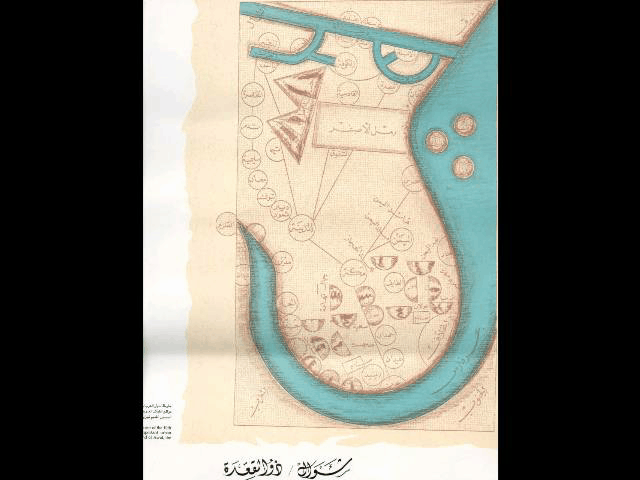
http://www.hcot.ir/Ketab/E-Magazine/MahFiles/T155.pdf
http://www.persiangulfstudies.com/fa/index.asp?p=pages&ID=774&Sub=619
http://parssea.org/?p=1040
https://twitter.com/IraninJapan/status/1199918736242688000
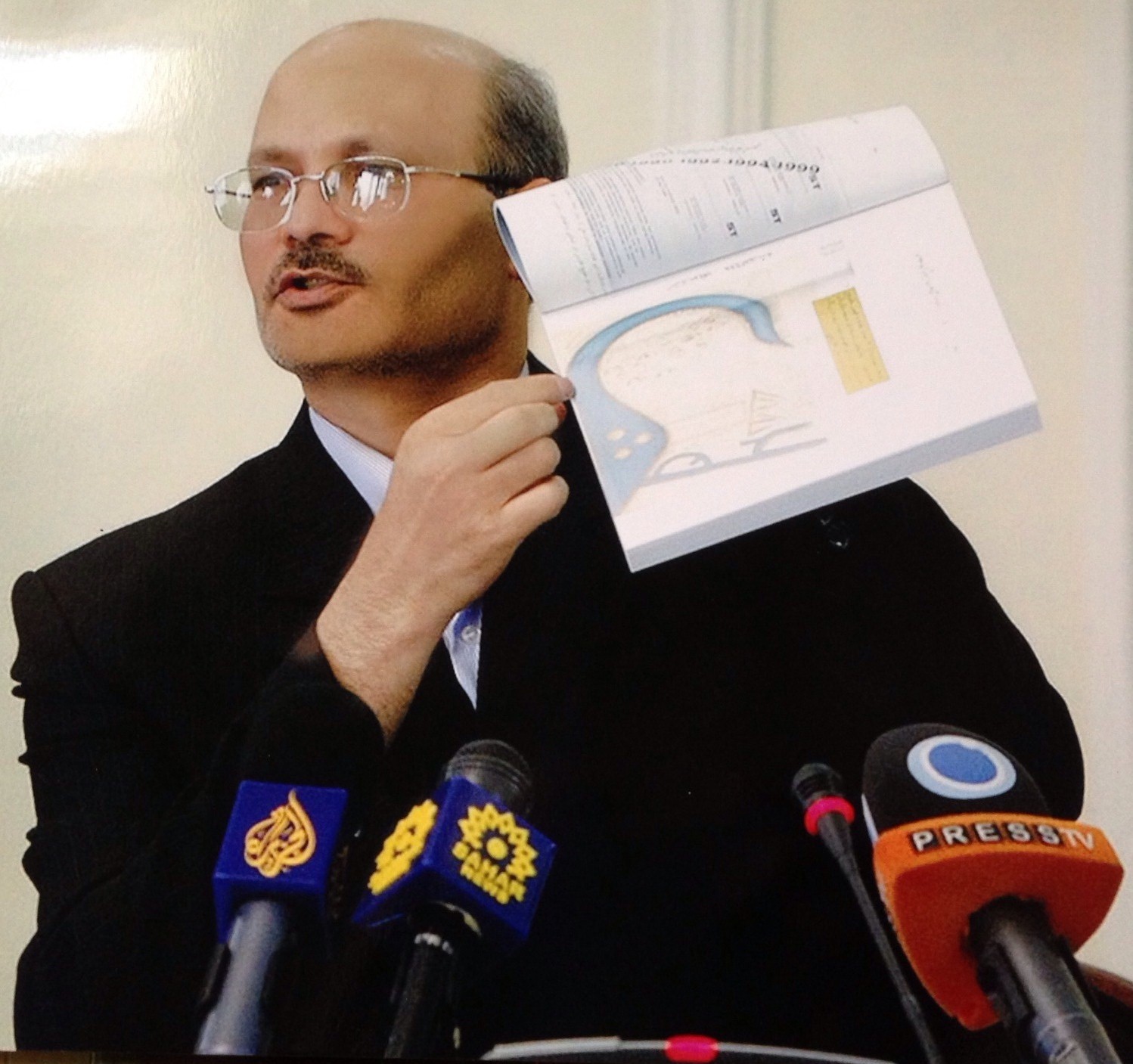
https://b2n.ir/052813
کتاب اسناد نام خلیج فارس، میراثی کهن و جاودان نویسنده دکتر محمد عجم
「ペルシャ湾」の永続性
毎年、4月30日(あるいは29日)はペルシャ湾の日に当たります。これは、一国の国民の歴史と文明に起源を発するものでもあります。
2005年から、アラブ諸国や一部の国際機関が国際関係の原則に違反し、妨害行為を行い、この妨害に人々が大きな抗議を起こしたことを受けて、4月30日をペルシャ湾の日としました。しかし、実際には、ペルシャ湾の日は、イラン国民の歴史に端を発するものだと主張することができます。
ペルシャ湾はオマーン海に続いている水域であり、イラン高原とアラビア半島の間に位置しています。その面積は23万7473平方キロです。また、ハドソン湾、メキシコ湾についで、3番目に大きな湾とみなされています。
ペルシャ湾はホルモズ海峡を経てオマーン湾へ、そしてインド洋につづいており、アルヴァンド川のデルタ地帯に、そし
て、西はチグリス・ユーフラテス川、カールーン川に接しています。
ペルシャ湾に接している国とは、イランのほか、オマーン、イラク、サウジアラビア、クウェート、アラブ首長国連邦、カタール、バーレーンです。ペルシャ湾の北部沿岸は、政治的にはすべてイランの領土に当たります。ペルシャ湾やその沿岸は石油や天然ガスが豊富に存在するため、この海域は国際的に重要なものとみなされています。
地理の名称に関する国連文書61によりますと、ペルシャ湾という言葉は紀元前にさかのぼるとされています。この名称にはすべての言語や、文学において、パールスやイラン、あるいはアジャムという言葉が使われています。紀元前5世紀以前から、この地域の名称はペルシャ湾とされてきました。実際、ギリシャ人やローマ人、そして東ローマ帝国やアッバース朝の人々、イスラムの地理学者は、このペルシャ湾の名称を常に使ってきました。タバリーやヤアグービー、マスウーディーの歴史書にも、まさにこの名称が使用されています。
ポルトガル人やスペイン人が侵入した後も、彼らの文書には、ペルシャ湾の名称が使われ、イギリス人やフランス人の侵略時代にも、ペルシャ湾と呼ばれており、ソ連、アメリカ、イギリスの百科事典にも、国連の文書にも、ペルシャ湾の名称が常に使われてきました。
紀元前のアケメネス朝時代のダーリウーシュ1世の碑文では、ペルシャ湾における水路の存在が伝えられており、そこでも、やはりペルシア湾にパールサという言葉が使われています。
2世紀のギリシャ人の歴史家アリアノスは、著書『アレクサンドロス東征記』の中で、「ペルシコン・カイタス」という言葉を使っており、これはペルシャ湾という言葉に近いと見られています。
また、1世紀の著名な地理学者ストラボンも、著書の中で、ペルシャ湾を指すためにこの言葉を繰り返し使っています。
2世紀の地理学者プトレマイオスは、ペルシャ湾を「ペルシクス・シヌス」としており、これはまさに、ペルシャ湾に当たります。一部のラテン語文献では、シヌス・ペルシクス、または、マーレ・ペルシクムとされており、これもまさにペルシャ湾を意味します。
現在使われている多くの言語で、ペルシャ湾を意味する単語が導入されているという事実は、触れておく必要があります。日本でもペルシャ湾と呼ばれています。
1世紀のローマ時代の歴史家、キンタス・クルシウス・ルフスも、「アクアルム・ペルシコ」という、ペルシャ湾に当たる言葉を使っています。
イスラム時代の歴史資料や地理資料でも、繰り返し、アラビア語でペルシャの海という言葉が使われています。
このため、この湾の歴史的な名称は、さまざまな言語で、ペルシャ湾、あるいはペルシャの海とされてきました。これにより、すべての国際機関では、この湾の正式名称はペルシャ湾とされています。
国際水路機関も、常に、ペルシャ湾という名称を使っています。
歴史上のさまざまな時代に残された資料や地図を調べてみると、ペルシャ湾がすべての国民や文化に、ペルシャ湾という名称で認識されていたということが明らかになります。しかし、こうした歴史的な根拠にもかかわらず、1960年代からの汎アラブ主義的な思想の広まりとともに、多くのアラブ人のナショナリストは、無思慮な行動により、ペルシャ湾をアラビア湾という名称に変えようとし、このことをアラブ連盟を通じて正式に通達しました。こうした中、イランの地理的な権利を明らかに侵害するこの行動は、どの国際機関によっても正式に認められていません。
国連などの国際機関や専門的な組織は、ペルシャ湾の名称を基本的な、信用性ある名称だとしており、ペルシャ湾の名称変更をまったく受け入れていません。国連事務局とその専門機関のある文書では、少なくとも8回にわたり、ペルシャ湾の名前が使用されています。
国連事務局は1971年3月5日付けの文書において、地図や地理書の中で、長年にわたりペルシャ湾の名称が使用されてきたことを認めています。また、1984年8月10日付けの文書と、1990年1月10日の覚書でも、正式にペルシャ湾だと宣言しています。国連は地理的名称の調整に関して開催される定例会合で、この海域がペルシャ湾であることを強調し、それを認めています。
国連は数回にわたる声明や決議の中で、正式な地図を発表し、ペルシャ湾の名称が公式のものであることを強調するだけでなく、国際的な代表団に対して、正式な文書、特に国連文書では、完全にペルシャ湾の名称を使用するよう要請しています。
一方で、一部のアラブ諸国によるペルシャ湾の名称改変の歴史的な起源とは、どのようなものなのでしょうか。
有識者によれば、このアラブ諸国による間違った呼称は、ペルシャ湾岸諸国がイギリスの委任統治下にあった時代に、イギリスの政府代表をつとめていたロデリック・オーウェンという人物よってはじめて使われたということです。1958年に出版された彼の著作では、次のように記されています。
「私はどの本や地図でも、ペルシャ湾という名前以外目にしたことはない、しかし、数年間、バーレーンにあたるペルシャ湾岸に住むようになってから、ここはアラブ人が住んでいる場所だと気づいた。つまり、アラブ人の海域と呼ぶのが礼儀だ」
アラブ人の組織によるこのような改変を受けて、いくつかの欧米の機関も、あらかじめ計画されたシナリオにより、歴史的な名称の改変をより広い形で続けています。2004年には、アメリカのナショナルジオグラフィック協会が、地図の中でペルシャ湾の名称の脇に誤った名称を挿入しました。
また、2006年には、フランスのルーブル美術館の責任者が、ペルシャ湾の誤った名前を使いました。ナショナルジオグラフィック協会とルーブル美術館はイラン人の愛国者の強い抗議を受け、これによりすぐに謝罪し、修正を加えました。
実際、イラン国民は、イランの土地を力強く守ってきた人々であり、権利の回復、自国の文明の歴史と文化的遺産を支えることにつとめ、すべての違反者に謝罪させてきました。イラン国民は国際機関に書簡を送り、ペルシャ湾の呼称への違
反者に反対する多くの署名をおこなうことで、イランの敵の悪しき計画を失敗に終わらせてきたのです。
出典:モハンマド・アジャム(Ph.D.)著『 ペルシャ湾の名称に関する史料、いにしえの永遠の遺産』
محمد عجم: https://www.civilica.com/Paper-GEO82-GEO82_74.html
درگذر زمان نامه های تاریخی نیز
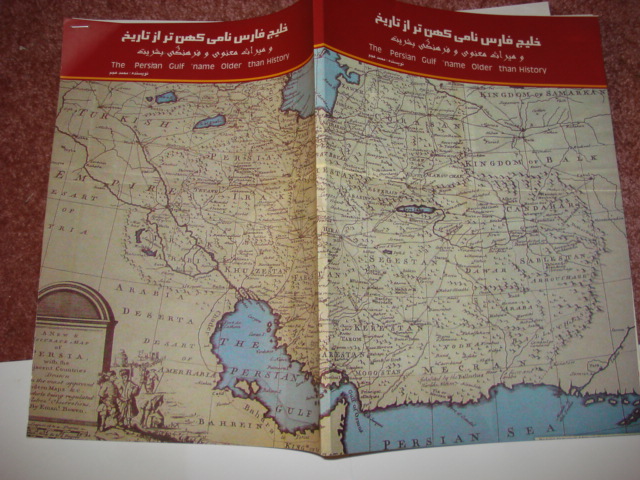
ペルシャ湾ナショナルデー
イラン暦オルディーベヘシュト月10日は、ペルシャ湾ナショナルデーに制定されており、ホルムズ海峡とペルシャ湾からポルトガル人を追放した記念日です。
アラブ連盟が1964年にアラビア語話者によるペルシャ湾の名称使用を正式に禁止するまで、1958年までは、ペルシャ湾の名称の継続的な使用については、世界のすべての言語で異議を唱える人はいませんでした。その後もイランのマスメディアは、2002年まで沈黙したままでした。ペルシャ湾の名称の擁護が公表されたのは、発行部数の非常に少ない一つのアトラスと2冊の本であり、その範囲は少数の図書館と大学教員の域を超えませんでした。しかし、2002年のペルシャのウェブサイトやブログの出現により、状況が変化し、ペルシャ湾の名前を擁護するブログや研究が発表されはじめました。
モハンマド・アジャム著『ペルシャ湾の名称に関する史料、いにしえの永遠の遺産』によれば、1990年代の初めから、衛星テレビが国内で普及し、文化コミュニティの中の意識の高いグループと、社会的および文化的問題に取り組んでいる人々は、アラビア語と、英語をはじめとするアラビア語以外のニュース番組やメディアが、ペルシャ湾の名称を大幅に歪曲していることに気づき始めました。すべての言語と時代におけるこの名前の一貫した正当性と、歴史的背景を主張するため、歪曲する人々に立ち向かい、またこの古代からの名称を保護することの重要性を伝えるため、この貴重な遺産の支持者は行動を起こしました。また、多数の会議やセミナーで、ペルシャ湾の名前の保護について当局に通知しました。1888年の設立以来常にペルシャ湾の名前を使用してきたナショナルジオグラフィックと呼ばれる世界的に有名なアトラスでペルシャ湾の名前を歪めた後、2004年11月の新しいバージョンで初めて、ペルシャ湾という国際的な名称に、新しい名称を併記しました。この非学問的な歪曲に対して、国内外の社会的および文化的活動家の間で、怒りと抗議が起こり、同機関に数千の電子メールと抗議の手紙と12万人以上のオンライン署名の請願書が送られました。アメリカの著名な機関の所長は、イランの人々に謝罪するとともに、過ちを埋め合わせると約束しました。この勝利は、団結によって、偉大な国のアイデンティティの破壊と改ざんを防ぐために偉業を成し遂げられることを示しました。アラブのマスメディアは、前例のないやり方でコメントなしでニュースを報道しましたが、一部は嘲笑し、一部はこの出来事に敬意を払っていました。
ペルシャ湾の文化的および精神的遺産を保護するために当時のイラン政府によって取られた措置の一つは、ペルシャ湾ナショナルデーを国の公式カレンダーに追加することでした。イラン政府は国内世論の高まりを受け、イラン暦オルディーベヘシュト月10日を、ペルシャ湾ナショナルデーとして国の記念日に正式に制定しました。
*Persian Gulf Day
April 29 is celebrated in Iran as ‘Persian Gulf Day’. Iranians care so much about the Persian Gulf , they dedicate April 29 to it in official calendar. In fact, the Persian Gulf is not just a body of water, but part of the culture, history and identity of Iranians and the whole region.
The historical, geographical and commercial position of the Persian Gulf, a place for all living civilizations to live and interact, makes it special to celebrate a day for; a day for all the Iranians to have a short opportunity to defend the historical and authentic truth of the Persian Gulf. This day is the anniversary of forcing out the Portuguese navy of the Strait of Hormuz in the Capture of Ormuz.
- The Persian Gulf is a valuable treasure, containing half of the world’s oil reserves, with a unique geographical location that profiteers are always plotting to dominate this regional and global economic highway. Geographical Position and Naming Issue: according to the book" Documents on the Persian Gulf's name The Persian Gulf is a name since 3000 years mentioned in books ,maps and artistic and archeological sites.
While today some regional elements making extensive efforts to use and establish a fake name (Arab Gulf) for the Persian Gulf which lacks historical citations and logical arguments. the United Nations has stated that it does not know any other name other than the Persian Gulf title.
The Persian Gulf, as a water and sea route, has been of great value since the dawn of history and has a history of several thousand years as a clash of ancient civilizations.
Historically, the shores of the P.gulf and the rivers that flowed into it have been the site of the first human civilisations. By studying the history of the Persian Gulf, you can go to sea with ancient fishermen; hunt pearls from Qeshm Island, go to Mesopotamia and dig out the ancient inscriptions of Cyrus; listen to historical stories of the atrocities committed by colonialists on the island of Hormuz, and hear the story of the outbreak of bloody wars and the pirates.
So, for Iranians, the Persian Gulf is not just a sea, but part of history, identity and national heritage. the Persian Gulf is a symbol of civilisation, culture and history that connect the nations of the region. Therefore, now all the countries in the region have a responsibility to preserve the historical heritage of this region in the same historical and original way. Some civilisations like Elamites and Persians date back more than 7,000 years, while others do not exceed a few decades; however, the historical character, originality and dignity of each country requires that it be proud of its resources and not be greedy about the cultural, geographical and ancient resources of others. No country is allowed to create a false identity for itself by distorting history, overturning the facts and stealing the cultural heritage of others.
The same importance of identical and strategic importance of the Persian Gulf has caused some racist individuals and organisations to use fake names for this gulf in the last few decades in order to be honoured by attributing it to them. But researchers, lawyers, historians and lovers of the Persian Gulf have prevented this with the help of the United Nations. All ancient geographical documents and maps in different languages such as Persian, Arabic, Spanish, etc. have referred to that gulf as the “Persian Gulf”. Thus, the distortion of its name is nothing but the blatant denial of a historical truth. The United Nations, citing ancient maps and texts, has been emphasizing the name of the Persian Gulf since 1980 with the issuance of various resolutions and statements.
The most important thing that has made the Persian Gulf extremely significant is the existence of natural resources, especially oil, so that the name of the Persian Gulf has become equal to oil and gas.
A major factor that makes the Persian Gulf oil and gas so vital to the United States, Western Europe, and Japan is the great difficulty in replacing the region’s imported oil and gas with resources.
The Persian Gulf region has the one of the largest oil and Gas reserves.
The Persian Gulf offers a unique model of a geopolitical region among the regions that exist in the part known as the Middle East, as separate and distinct geopolitical regions. The region includes nations that are culturally diverse but coordinated politically, strategically, and economically.
The gulf contains countless valuable marine resources and has valuable animal and plant species, the preservation of which requires the efforts of littoral states. The gulf is also an important international waterway, with its privileged location between the three continents of Europe, Asia and Africa, making it a highway for maritime trade in the region and the world.
All the historical, cultural-identical, economic, geo-economic and geopolitical aspects of the Persian Gulf make it doubly important to maintain the security of this gulf for the whole region.
https://www.isna.ir/news/97021006028/
https://www.isna.ir/news/1400021006864/
https://b2n.ir/s67997
چه باید کرد؟ 26.7.1381
Documents on the Persian Gulf's name. parssea.org
これまでのところ、アラブ世界の何十人もの著名人が別々の記事で次のことを認めている。
「エジプトのアブデルナセルの治世まで、『アラブ湾』という言葉はアラビア語の文書や口承文学には見られないため、ペルシャ湾という元々ある歴史的な名前を変更することは正しくない。」
そのアラブ世界の著名人の中には、アブドゥル・ハーディ・アル・ターズィ、アブドゥッラー・イブン・クラン、アブドゥル・ハリク・アル・ジャン・ビ、アブドゥル・モネイム・サイード、アブドゥル・ラフマン・ラシッド、ユースフ・アル・カラダウィ、マジディー・オマル、サアド・イブン・トゥフラ、アフマド・アル・サラフ、サラー・アル・サイイェル、アル・ムバラク・イブン・アブドゥルアズィーズ、アリー・ハミーダーン、などがいる。
出典:『ペルシャ湾の名称に関する史料、いにしえの永遠の遺産』、parssea.org
انیمشن نقشهها:....
درگذر زمان نامه های تاریخی نیز همانند انسانها دستخوش حوادث و رویدادهای
So far, dozens of prominent figures in the Arab world have admitted in separate articles that:
" Until the reign of Abdel Nasser in Egypt, the word 'Arab Gulf' cannot be found in any Arabic documents or oral literature, so changing the original and historical name of the Persian Gulf is incorrect."
Among them: Abdul Hadi Al-Tazi, Abdullah Ibn Kran, Abdul Khaliq Al-Janشbi, Abdul Moneim Saeed, Abdul Rahman Rashid, Yusuf Al-Qaradawi, Majdi Omar, Saad Ibn Tufla, Ahmad Al-Sarraf, Salah Al Sayer, Al-Mubarak Ibn Abdul Aziz- Ali Hamidan Nejah M.Ali -Hozan Qaso and ....
Excerpts from the Book”:
Documents on the Persian Gulf's name by Dr.Mohammad Ajam . parssea.org
https://b2n.ir/882477 تحریف نام خلیج فارس
https://www.webcitation.org/6PuCsAOso نوشته دکتر محمد عجم ، بحر فارس و تفسیر قرانی و حدیث پیامبر
https://japan.mfa.gov.ir/portal/newsview/46047
https://japan.mfa.gov.ir/portal/newsview/594107 ND.PG